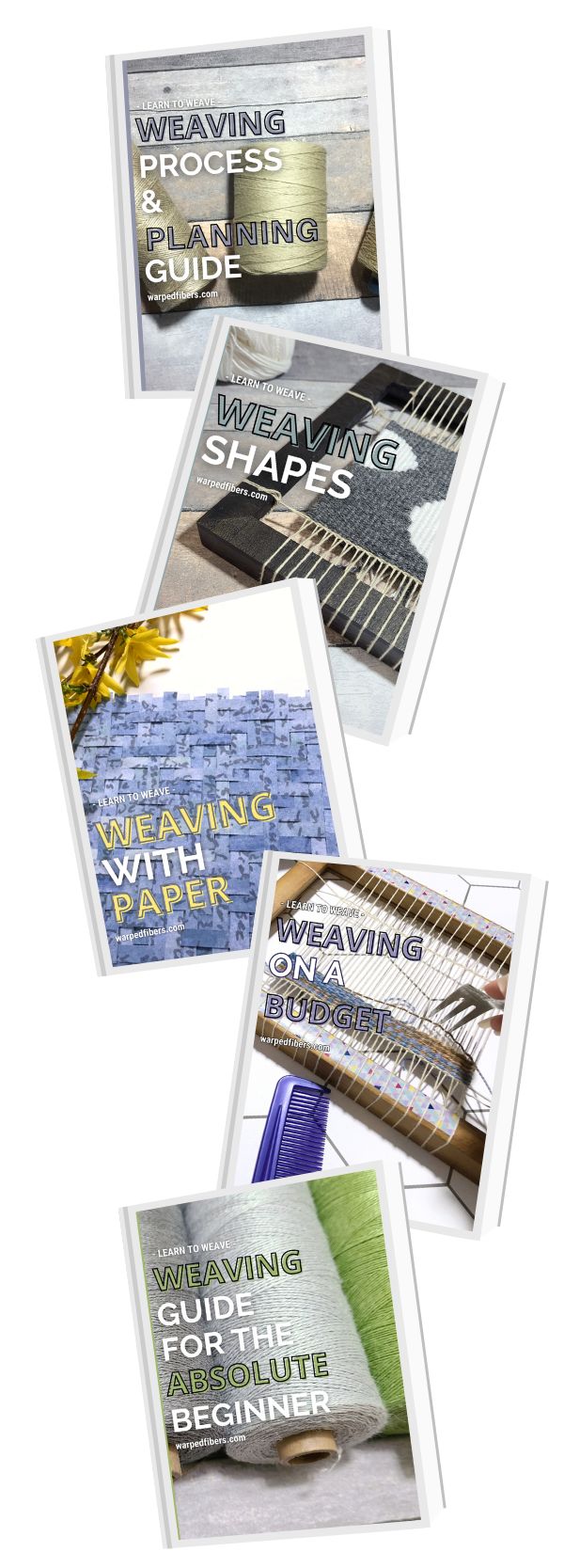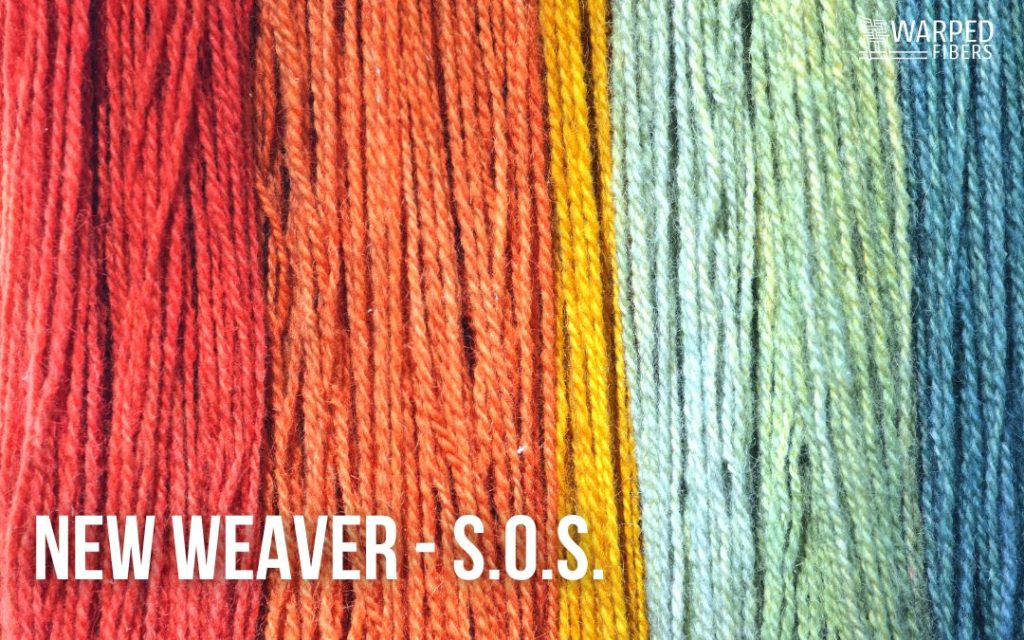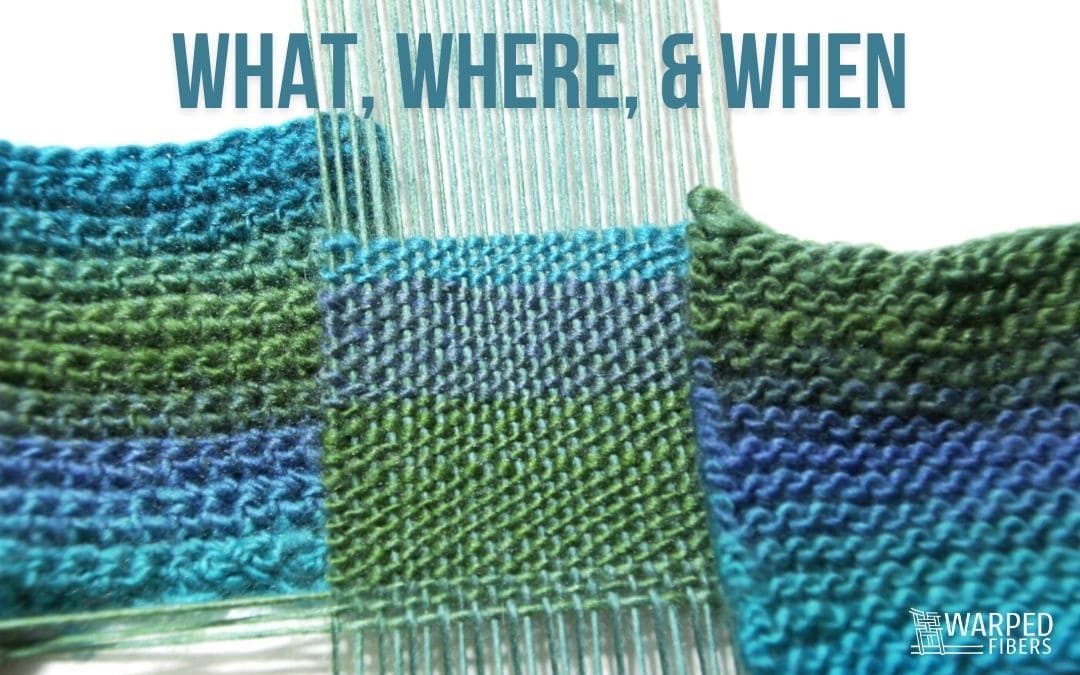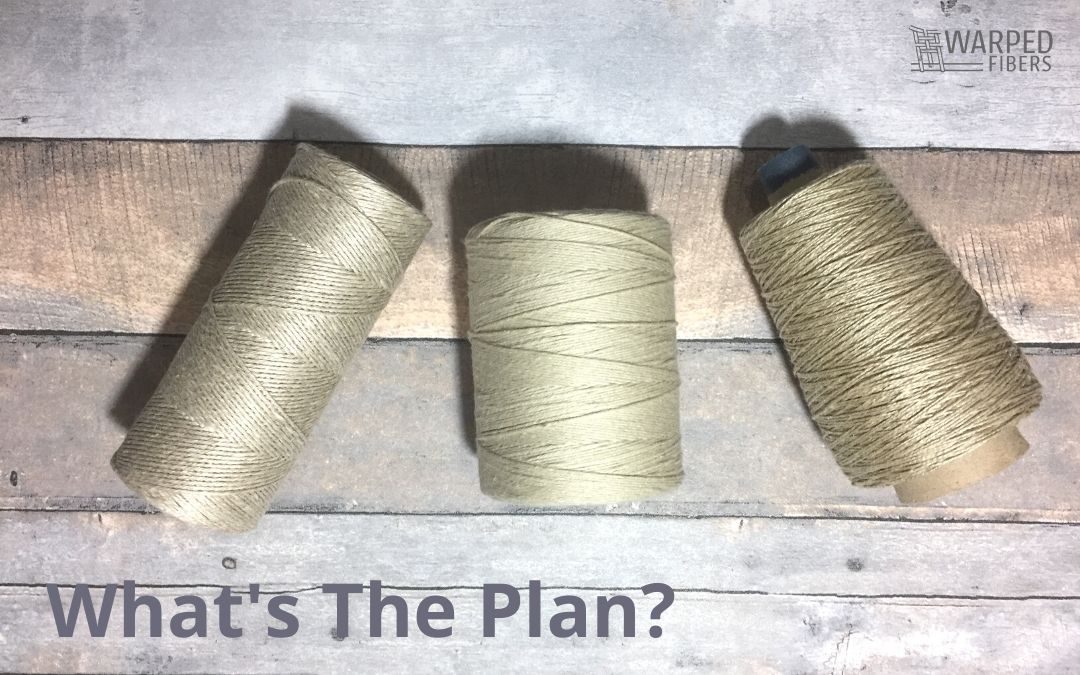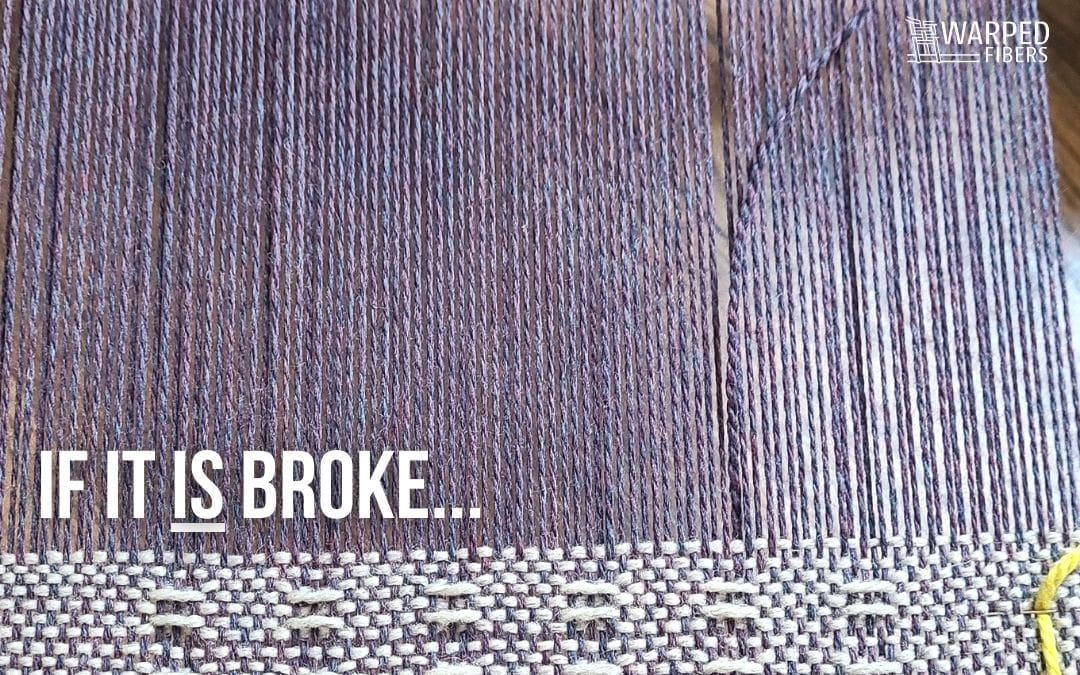Starting out with rigid heddle weaving usually involves different types of plain weave patterns.
Let’s get this straight first: there is absolutely nothing wrong with plain weave! Balanced plain weavings can be incredibly beautiful, interesting, and dynamic.
Check out my post on how to weave patterns in plain weave with color here.
Sometimes, though, you want a little bit more.
While some rigid heddle looms have the ability to have an extra heddle – that may not be something you are ready to do yet. Either because purchasing a new heddle is currently cost-prohibitive, or because you are looking for a simpler option that still creates interesting results.
That is where pick-up patterns come into play!
This page may contain affiliate links. If you purchase something through these links then I will receive a small commission – at no extra cost to you! Please read our DISCLAIMER for more info. Thanks for the support!
What is pick-up rigid heddle weaving?
Pick-up rigid heddle weaving is a technique that essentially adds the functionality of an extra heddle to your loom without actually adding an extra heddle. It also allows you to easily weave floats into your weaving.
Floats?
Floats are areas of yarn that sit over the top of more than one yarn. You can have both warp and weft floats depending on the pattern you are following. These floats can add visual interest to your weaving as well as possibly giving it a gauzy or lacy look.
Keep in mind that your pick-up weaving could probably look very different after it is washed – depending on the materials you use. Below is an image of the same weaving after it has been washed and dried. This scarf is made of 100% wool so washing it really brings out the character of this type of weaving.
What you need to weave pick-up patterns
Weaving pick-up patterns on your rigid heddle loom requires very few supplies to make the magic happen. It is really only one extra tool than you would need if you were weaving regular plain weave.
Dedicated pick-up sticks are great because they are made with a tapered end to more easily pick up the warps that need to be separated. They also have rounded smooth sides that make sliding it through your warp and turning it into a smooth movement. This means you do not have to worry about friction abrading your warp yarns.
If you are looking to get started without getting a pick-up stick then you can also use a ruler or a flat shuttle as your pick-up stick. (I am using a flat shuttle in these images because my pick-up stick was not long enough for my 10-inch weaving.)
Keep in mind that you have to be careful with rulers since they are usually “sharp” on their sides. Using a ruler with fragile yarns could lead to a broken warp!
I have also been known to use some very sturdy mat board as my pick-up stick. It is absolutely ok to use whatever you have on hand.
Not surprisingly, you will also need a rigid heddle loom and some yarn!
The rigid heddle loom I am using is my Schacht Flip Folding Rigid Heddle Loom.
You can read my review on the Schacht here.
You can read about purchasing yarn online here or check out my favorite yarns here!
How to read pick-up instructions
When you are looking for pick-up patterns there are a few instructions that will come up.
Up, Down, pick-up stick, up and pick-up stick.
Up and down are pretty self-explanatory, but we will touch on them quickly anyway. Whenever you see up or down in your pattern you will be placing your heddle in either the up or down position on your loom.
When you see “pick-up stick” in your pattern you will move it up to right behind your heddle while it is in the neutral position. Then you will rotate your pick-up stick 90 degrees so that it creates a shed. After you are done you can then slide your pick-up stick towards the back of the loom. This is where your pick-up stick will live when it is not in use so that it does not affect the rest of your weaving.
“Up and pick-up stick” means that your heddle will be in the up position and the pick-up stick will be moved towards the back of the heddle while still laying flat against the warp. This will make it so the shed has both the up warps and the pick-up stick warps in a position to be woven under.
You can notice the difference in the warps that are being woven if you look at the right side of each image. This is the same pick-up stick just in different positions. The up and pick-up stick pattern will have a lot more warps on the surface and a lot less on the underside than the other positions.
Setting up your pick-up stick pattern on your rigid heddle loom
The most important thing to know about setting up your pick-up stick is that your heddle must be in the down position.
A reminder of your rigid heddle “anatomy”: your heddle has 2 areas for your warps to go. You have slots and eyes (holes) which are what allow you to create a shed as they move in the up or down position. The warps in the eyes are physically moved up and down as the heddle moves.
Setting up your pick-up stick in your down position is important because the slot yarns are freer to move around. This allows the down position to put the slot warps on top. These free-moving warps, therefore, are perfect for manipulating and creating patterns.
The above pattern shows 6 up, 2 down, 5 up, repeat. Ending in 6 up. This is half of the pattern that you can see in the first image of the post (red and white scarf!) and it is a variation on a pattern I found in the book Inventive Weaving On A Little Loom by Syne Mitchell.
You can read my review on this rigid heddle weaving book here.
Tip: If you are having a hard time seeing your warps to set up your pick-up stick then you can slide a piece of paper into your shed. This will make it so the warps underneath are not visually interfering while you set up.
Let’s take a look at a pick-up pattern example.
Over 2 Under 2
Up
Pick-Up Stick
Up
Pick-Up Stick
Down
Repeat
In this pattern, you would put your heddle in the down position and weave in your pick-up stick in an over 2, under 2 pattern.
Then you would follow the directions – remembering that “pick-up stick” requires the heddle to be in the neutral position and the pick-up stick turned 90 degrees to make a shed.
Make a pick-up sampler
When you are new to pretty much anything with weaving it is a really good idea to make some samples.
You may even remember the entire post I did about the importance of making weaving samples.
One of the best ways to really understand how to make a pick-up weaving on your rigid heddle loom is to keep trying different patterns and making sure you keep a record of what you are doing. You do not want to accidentally come across a pattern you really like and then not know how to recreate it later!
I did this…
I recommend trying out at least a few inches of each pattern to really be able to see how it will turn out on a larger scale. When you take it off the loom, you will also be able to clearly see how the back looks compared to the front. If there is weft floats on the front of the weaving then there will be warp floats on the back.
You can also add a plain weave border on each side by starting and ending your pattern with more “up” warps. Taking our earlier pattern as an example – if we want to add a border we could change it to: over 6, under 2, over 2, repeat, and end in over 6.
This can give your weaving a really clean look, but make sure try it out first in a sampler to see if you like it.
Let me know what types of pick-up patterns you have been working on!



















